FETISHES, 2015
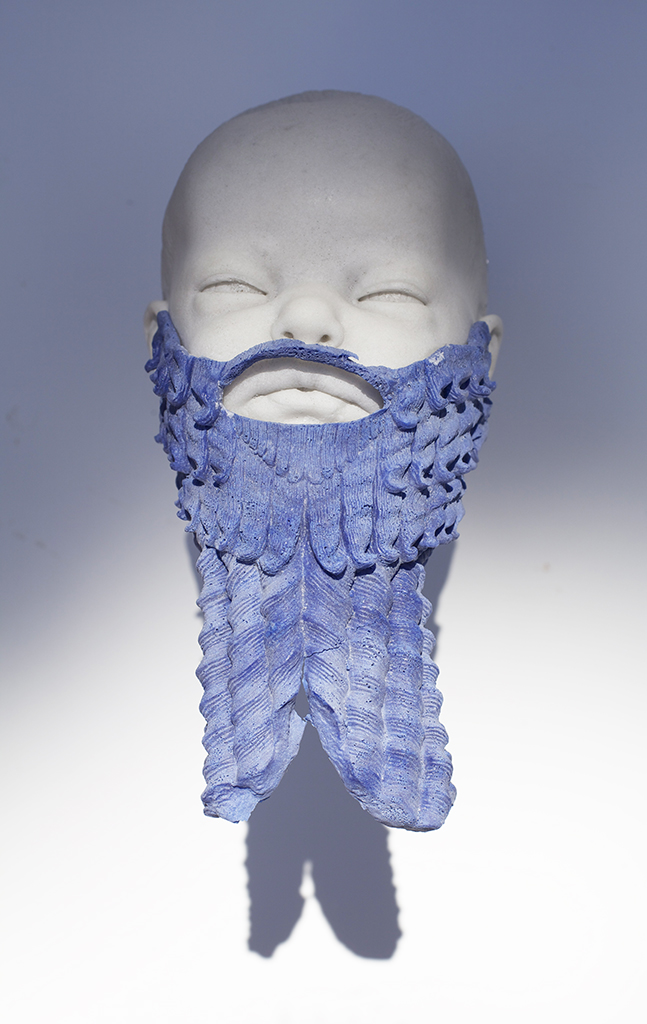
UNTITLED (BABY BEARD), 2015, CAST MARBLE AND LAPIS LAZULI
10h x 5w x 5d inches
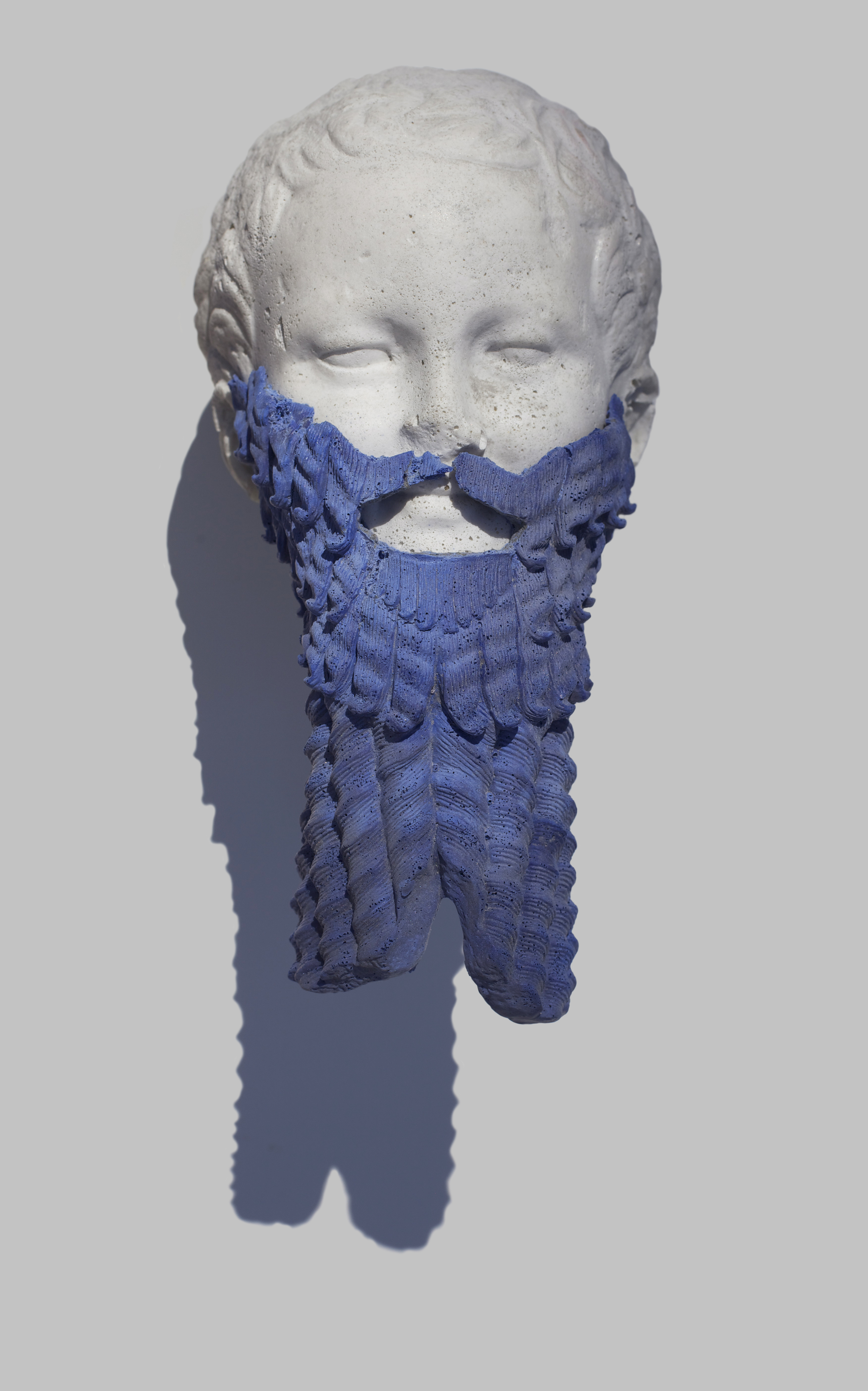
Untitled (boy beard), 2015, cast marble and lapis lazuli
11 h x 5.5 w x 7 d inches
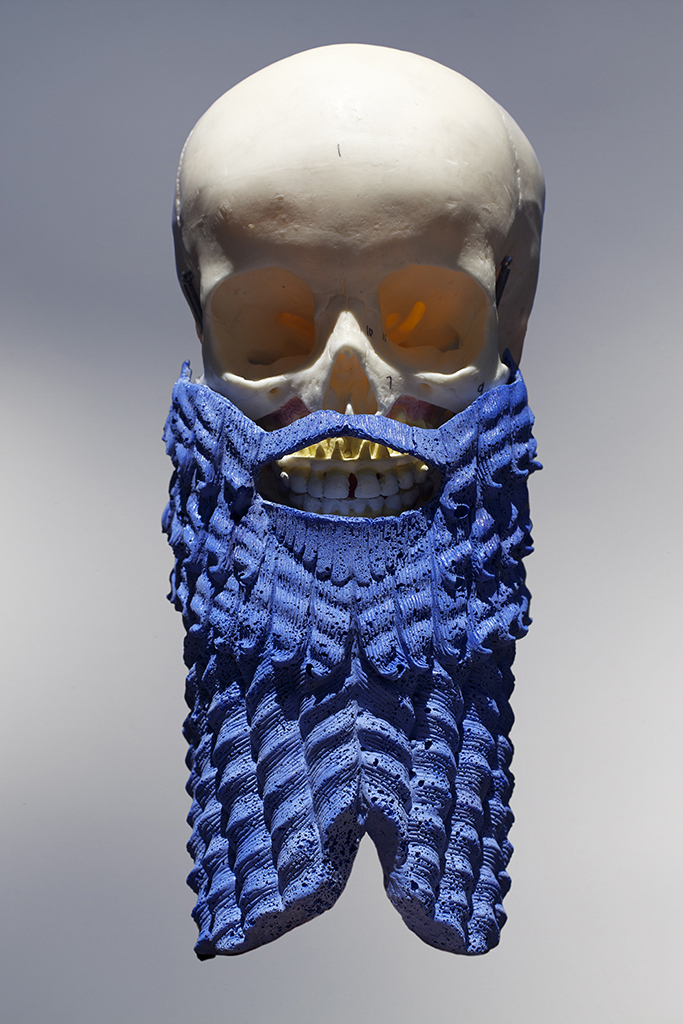
UNTITLED (skull beard), 2015, cast marble and lapis lazuli
7 h x 4.5 w x 6 d inches

OPPOSITION, 2015, BONE BOX AND CAST LAPIS LAZULI
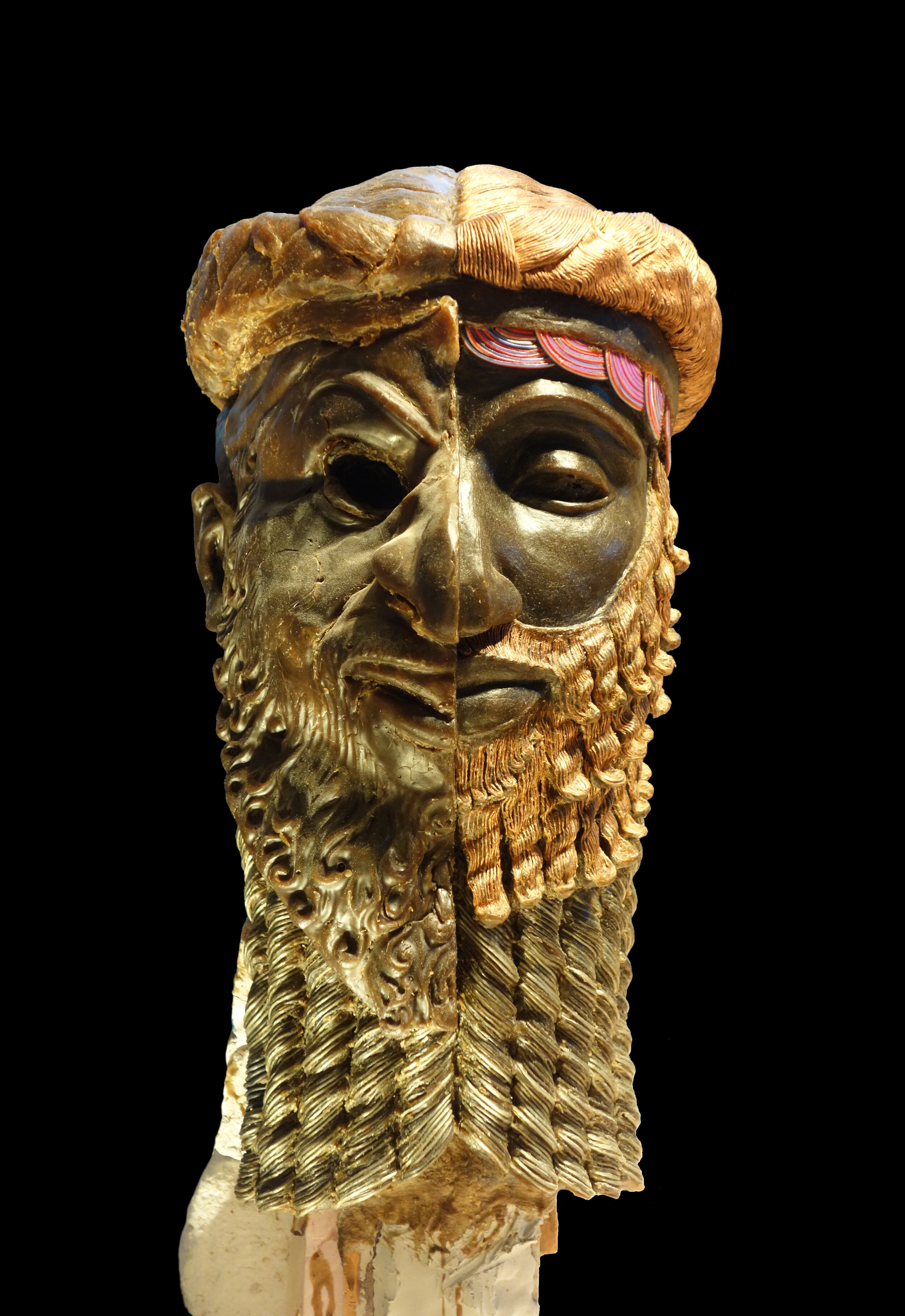
PROFILE 2011
Wax, copper wire, electrical wire, mixed media pedestal.
Profile (2011) presents a two-faced bust like that of Janus, though both face forward instead of opposite directions. The work embodies a regal dignity and its debased doppelganger. It is derived from a bust that was long considered a portrait of Sargon, the Akkadian emperor from the third millennium B.C., but is more probably his grandson, Naramsin. One of the greatest artifacts from the cradle of civilization, it is provocatively juxtaposed with one of the crudest conceptions of what many Americans perceive and profile as "Arab." This ancient royal figure shares a profile with Osama Bin Laden, cast from a cheap rubber mask designed for costume parties.

PROFILE 2022
Right side view
Profile both "repairs" and "revises" an object that was reported as missing from the National Museum of Iraq after the 2003 looting. It appears on the Oriental Institute's "Lost Treasures from Iraq" site hosted by the University of Chicago. This report was apparently erroneous but still reflects the confusion and severity of the actual losses that have occurred throughout war-torn countries like Iraq.
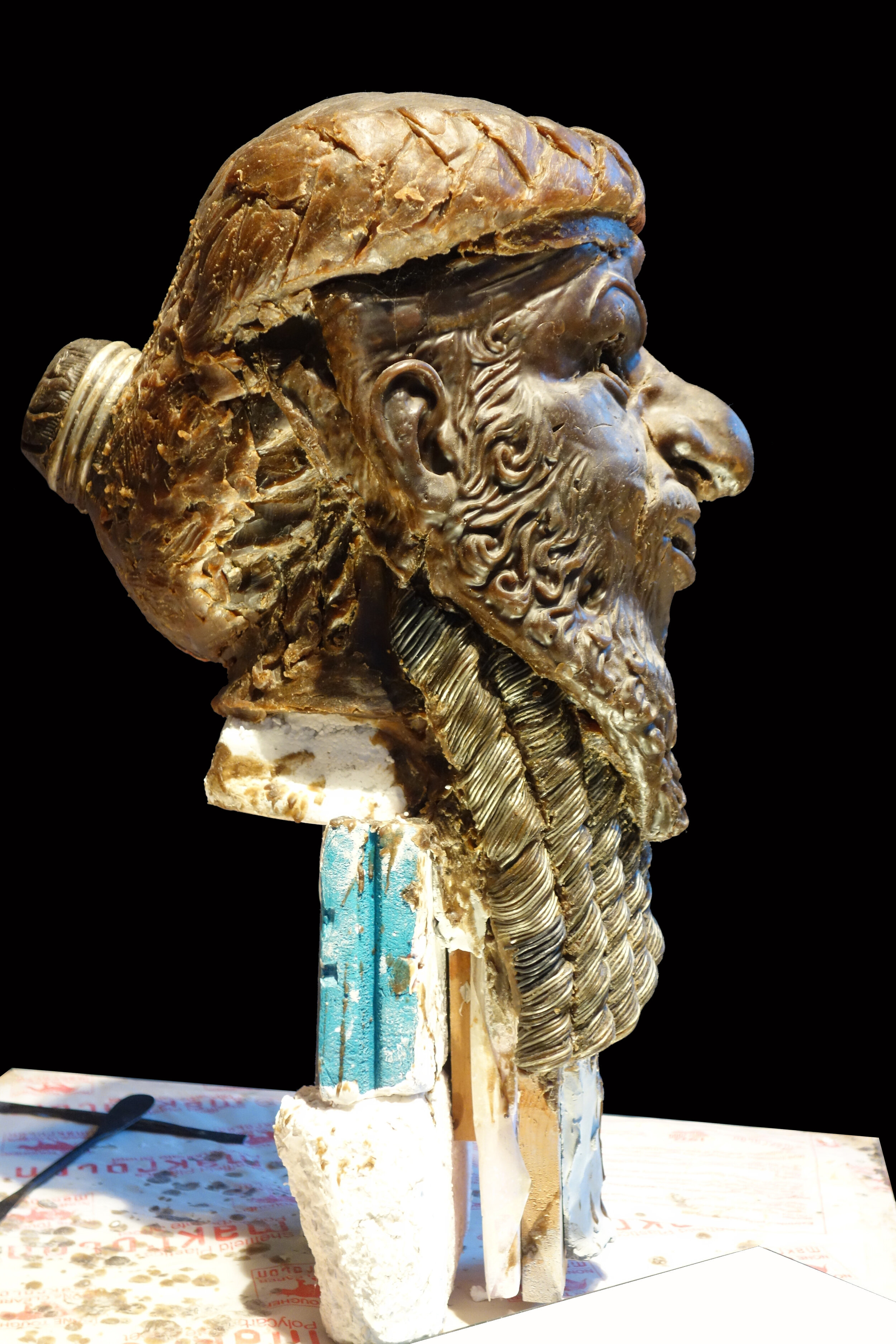
PROFILE 2011
Left Side View
Culture is always made vulnerable by war and civil unrest. Profile asks us to reclaim or reassess beyond physical damage or loss. Its dual visage questions our respect for civilizations threatened and plundered by both brute and subtle forces, including stereotyping and propaganda.
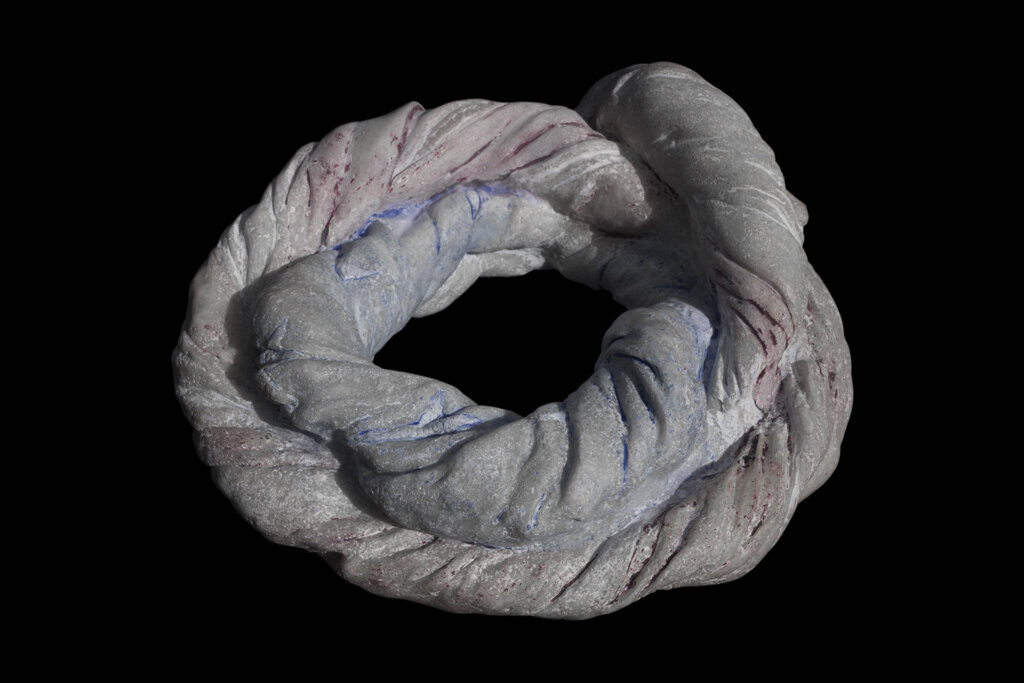
WORN 2013
Cultured marble, sanded paint

RED BEARD 2014
Ink on paper
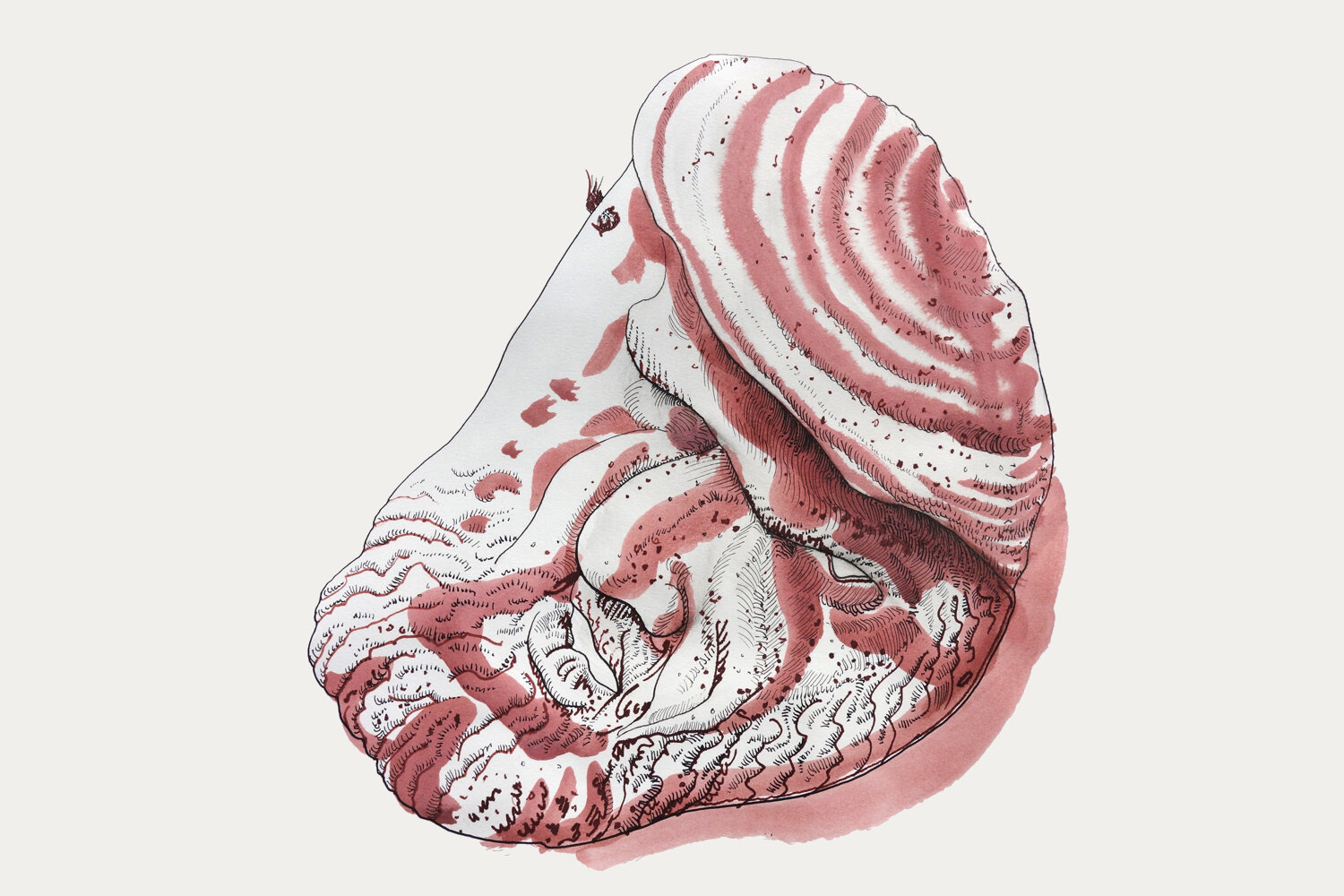
RED BEARD 2014
Ink on paper
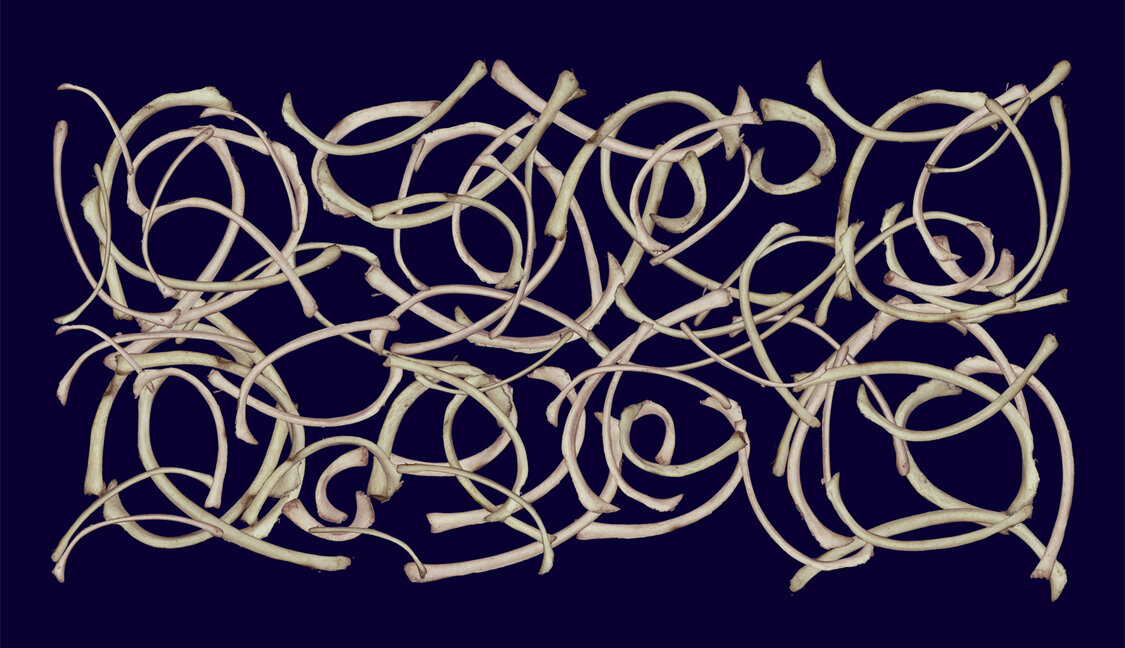
SCRIBBLES 2010
Archival inkjet print on Hahnemuhle paper.
Scribbles is a series of digital collages that deals with missing information, an elision in both subject matter (bones absent flesh) and execution, as the bones form the basis of an absent Islamic pattern. The implied spatial relationships are contradicted in part by the varying scale of the bones that are woven. Like yanking a cloth from a laden table and leaving the plate settings intact, removing the underlying template leaves the bones aligned to a design that is no longer seen directly. The remaining tracery of this impossible skeletal structure alludes to a vanished whole. The viewer glimpses an unattainable perfection that only exists in memory.